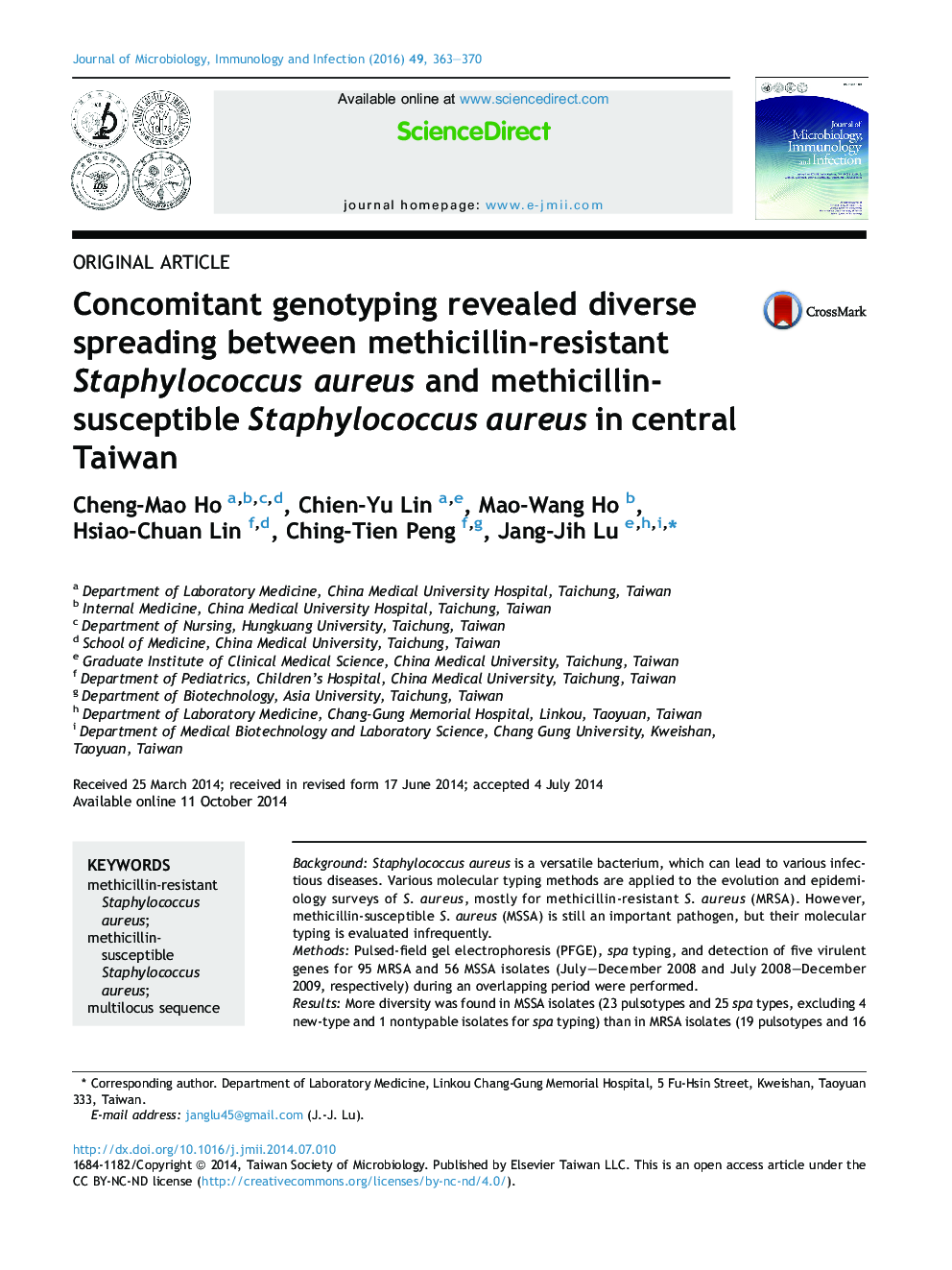| Article ID | Journal | Published Year | Pages | File Type |
|---|---|---|---|---|
| 3377700 | Journal of Microbiology, Immunology and Infection | 2016 | 8 Pages |
BackgroundStaphylococcus aureus is a versatile bacterium, which can lead to various infectious diseases. Various molecular typing methods are applied to the evolution and epidemiology surveys of S. aureus, mostly for methicillin-resistant S. aureus (MRSA). However, methicillin-susceptible S. aureus (MSSA) is still an important pathogen, but their molecular typing is evaluated infrequently.MethodsPulsed-field gel electrophoresis (PFGE), spa typing, and detection of five virulent genes for 95 MRSA and 56 MSSA isolates (July–December 2008 and July 2008–December 2009, respectively) during an overlapping period were performed.ResultsMore diversity was found in MSSA isolates (23 pulsotypes and 25 spa types, excluding 4 new-type and 1 nontypable isolates for spa typing) than in MRSA isolates (19 pulsotypes and 16 spa types, excluding 1 new-type and 1 nontypable isolates for spa typing). By spa typing, t002 (n = 30), t037 (n = 23), t437 (n = 21), t234 (n = 3), t1081 (n = 3), and t1094 (n = 3) were the six major MRSA clones. For MSSA isolates, t189 (n = 13), t437 (n = 4), t084 (n = 3), t213 (n = 3), t701 (n = 3), and t7200 (n = 3) were the six major types. Combining PFGE and spa typing, there were five combinations (pulsotype + spa type) that contained both MRSA and MSSA isolates (pulsotype 9-t437, pulsotype 15-t037, pulsotype 19-t002, pulsotype 21-t002, and pulsotype 28-t1081). For all 151 S. aureus or 95 MRSA isolates, the PFGE typing had more discrimination power, but spa typing had larger discrimination index for 56 MSSA isolates.ConclusionIn conclusion, there were different predominant MRSA and MSSA clones clinically. Continuing longitudinal tracking of molecular typing is necessary for elucidating the evolution of this important clinical pathogen.
